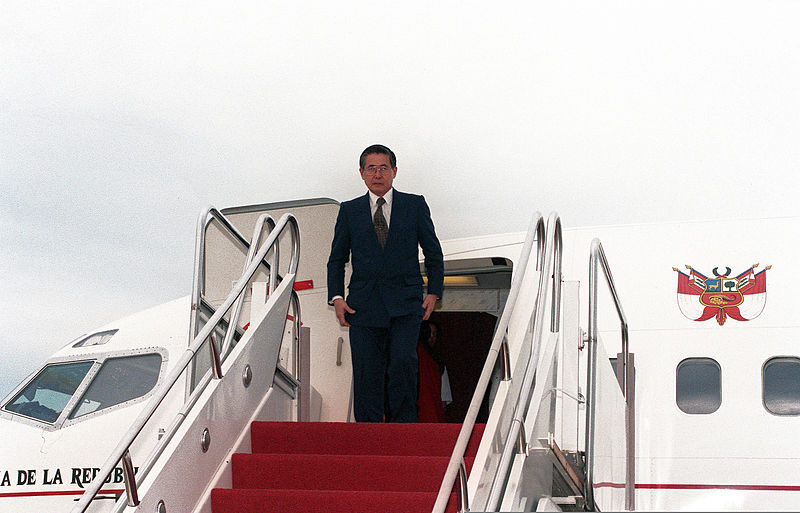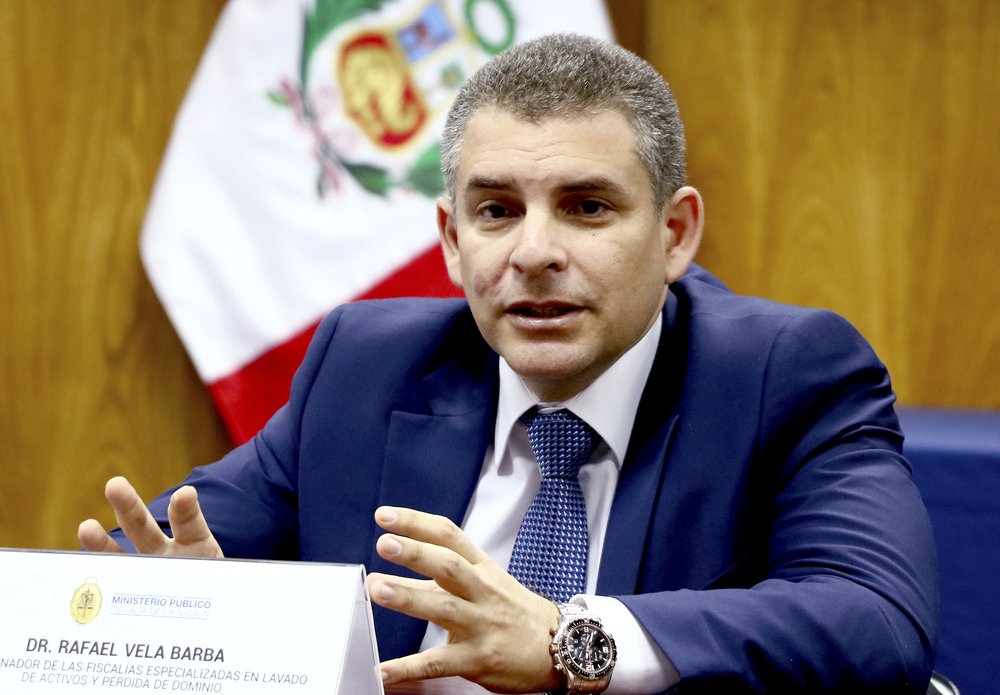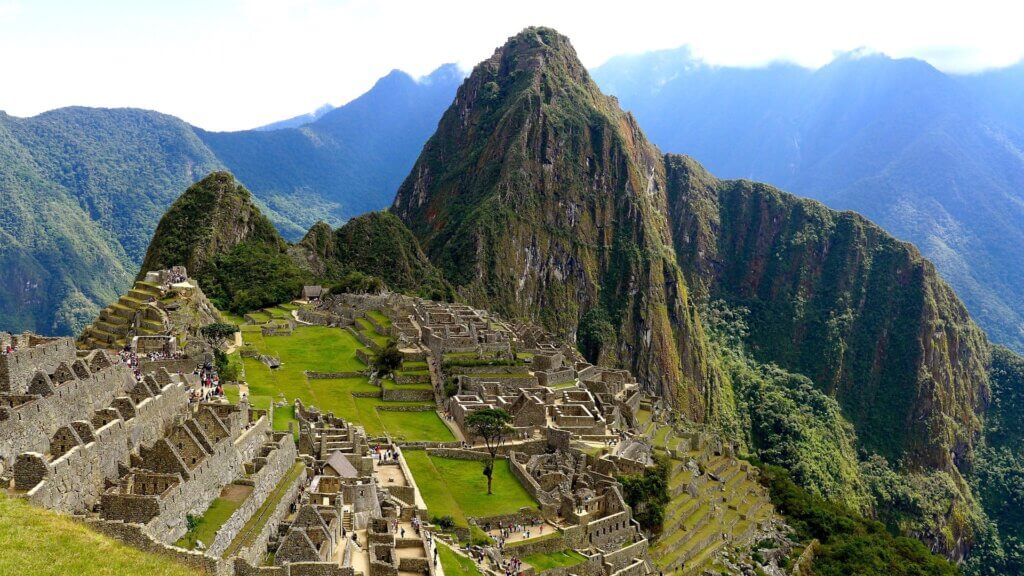Alberto Fujimori served as president of Peru from 1990 to 2000.
Alberto Fujimori was born on July 28th 1938 to Japanese parents names Mutsue Inomoto Fujimori and Naoichi Fujimori. They had immigrated to Peru from Japan in 1934. In 1957 Fujimori pursued a degree in Agricultural Engineering at Universidad Nacional Agraria La Molina, graduating in 1961.
After working as a mathematics professor for some time, he moved to France in 1964 to study Physics at the prestigious University of Strasbourg. He later obtained a Master degree in Mathematics on a Ford Scholarship at the University of Wisconsin-Milwaukee in 1969.
He came back to Peru to become dean of Universidad Nacional Agraria. During the same period he hosted a popular TV show called ‘Concertando’ on Channel 7.
Political life
In 1990 Fujimori founded a poltical party named ‘Cambio 90’ and ran in the 1990 presidential elections. The results were a huge surprise. Fujimori defeated world famous writer, and favorite to win Mario Vargas Llosa by a considerable margin.
During his first term in office, Fujimori implemented wide-ranging neo-liberal reforms, known as Fujishock. Former president Alan García had left the country in a poor economic state and therefore Fujimori declared his objective to pacify the nation, which was in chaos after the country’s internal conflict, and restore economic balance.
Through Fujishock, radical programs of free-market reforms were enforced, subsidies removed and state-owned companies were privatized, basically reducing the role of the state in almost all spheres of the economy. As part of Fujishock, the minimum wage was quadrupled, tariffs were radically simplified, and the government established a $400 million poverty relief fund.
Fujimori also allegedly oversaw forced sterilizations, or what was known as “family planning” during the 1990s.
The economic reforms bore no resemblance to his presidential campaign, and brought hardship for ordinary Peruvians. The price of electricity, water and gasoline rose significantly. However it did succeed in restoring Peru in the global economy by the second half of the 1990s.
On 5 April 1992 with military support, Fujimori carried out a presidential coup (autogolpe), dissolving the Peruvian congress and court- this later became known as “fujigolpe.”
His seizing of dictatorial powers was partly due to the fact that the APRA and Vargos Llosa’s party, the FREDEMO, had tight control of both chambers of Congress, the Chamber of Deputies and the Senate. This hindered Fujimori’s enactment of economic reform, and he claimed due to the obstructionism in Congress, he was unable to rescue Peru from the chaotic mess left by García. He also blamed Congress for their poor effort in helping to combat the left-wing guerrillas, Shining Path (Sendero Luminoso) and used this to further legitimize his coup.
Despite Fujimori’s growing image as a dictator, he quickly won back the support of his people by capturing the leader of rebel group Shining Path. And he was re-elected in 1995.
Corruption and human rights charges
In his second term, Fujimori declared amnesty for police and Peruvian military accused of human rights abuses in the last 15 years. He also signed a peace treaty with Ecuador, which established a framework for ending a long running border dispute between the two countries.
However, the public soon began to voice their concern about Fujimori’s exerted control on the media, and the judiciary. He was accused of spying and intimidating rivals with help from his intelligence chief, Vladimiro Montesinos. This criticism increased when he announced he was to stand for an unprecedented third term.
Although Fujimori won the election in 2000, after 6 weeks of protests and accusations of vote rigging, he was forced to step down.
In 2000, a bribery scandal emerged involving Fujimori and Vladimiro Montesino over illegal wiretapping and embezzling government money to bribe politicians and public figure to support his 2000 re-election campaign. Fujimori fled to Japan in November 2000, where he stayed under a self-imposed exile for five years.
Eventually extradited to Peru, Fujimori was arrested over a series of corruption and human rights charges in November 2005. On December 11 2007 he was sentenced to six years in prison and fined 400,000 soles ($ 135,000 USD) for abuse of powers in ordering a warrantless search of Montesion’s wife’s apartment.
On 7 April 2009 Fujimori faced another trial on charges of human rights abuses. He was found guilty of authorizing death-squad killings in two incidents, the November 1991 Barrios Altos massacre, and the July 1992 La Cantuta Massacre, which resulted in the deaths of 25 people. He was also found guilty for his taking part in kidnappings of Peruvian opposition, journalist Gustavo Gorriti, and businessman Samuel Dyer. The court sentence Fujimori to 25 years in prison.
Further trials were held in July 2009, and September 2009, where Fujimori was found guilty of embezzlement, bribery and tapping phones, all involving Montesino.
In late 2012, Fujimori’s family began requesting for his pardon due to deteriorating health conditions. All of which were denied due to his condition not being serious enough to warrant it.
In 2017, after trips to hospital and new medical reports, President Pedro Pablo Kuczynski is in discussion over issuing a humanitarian pardon to Fujimori.










